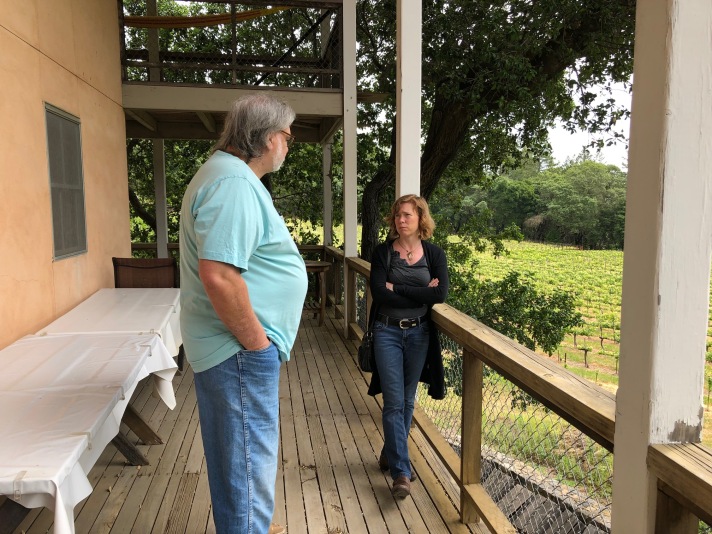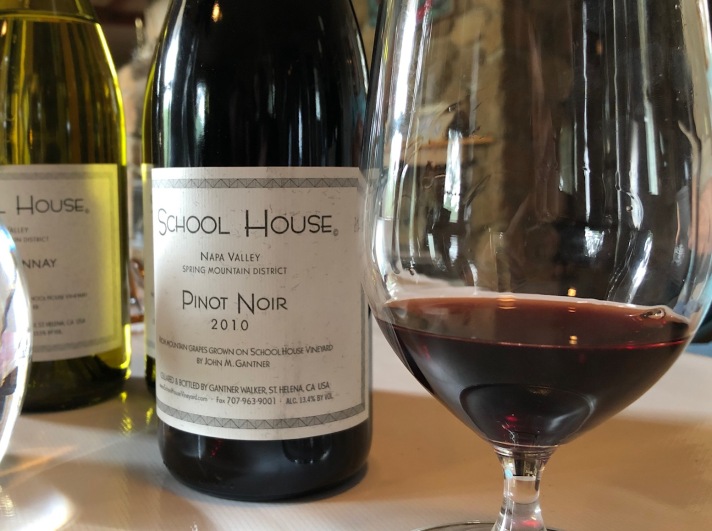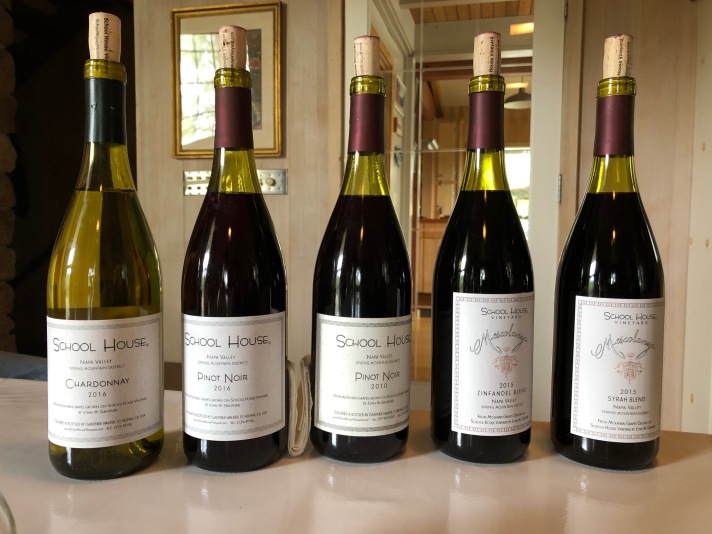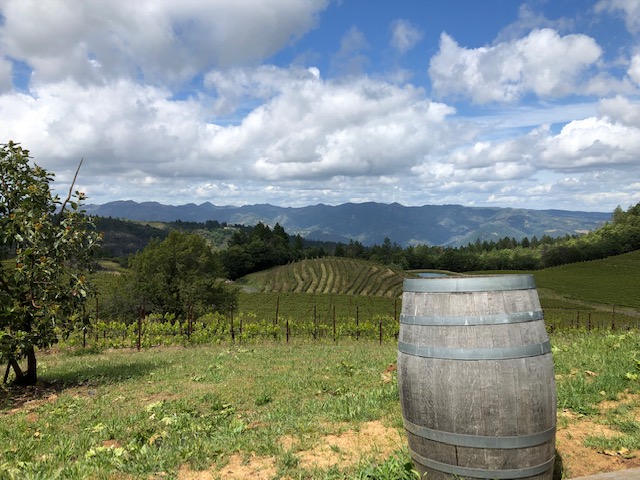All photos by Steve Mort
Napa and Sonoma, the two counties at the heart of California wine country, are famous for lavish tasting rooms, Michelin star restaurants, and deluxe accommodations. Drive even a few hundred yards along Napa’s main thoroughfare, Highway 29, and you’re likely to pass five or six big name wineries ready to put on an impressive, pricey, and often thoroughly enjoyable show for you.
But hidden behind them, there’s another world — a place that’s more about passion than money, more about soil than manipulation, more about history than trends, and more about experimentation than safe bets. You have to look a little harder for this hidden Wine Country, drive a little farther to get there, and pay a little more attention when you arrive. But it’s well worth the effort.
Part 1 of this series takes us to School House Vineyard, a Napa stalwart making elegant wines that remain largely unknown, even to many of the Valley’s most ardent fans.
A Hidden Gem, Quite Literally
I follow a winding road out of bustling St. Helena, meandering along a babbling stream up the gentle slope of Spring Mountain. A small side road leads to a long driveway that ends at an unassuming house amidst a sea of vineyards. There’s no sign outside, but a large man with shaggy gray hair and a short white beard steps out to greet me.
It’s School House manager Tim Mosher, who spent 25 years in Napa’s restaurant and wine business, left to travel the world, and was lured back to help with operations at one of Napa’s oldest continually operating vineyards.

He ushers me onto a long deck that runs along the back of the house. Vineyards stretch out before us, and there’s one sure sign that I’m not in mainstream Napa anymore: there’s not a cabernet vine in sight.
Pinot noir is the flagship grape here and has been since the first School House vintage in 1957. Until the late 1990s, pinot was the only wine School House made.
This property was originally planted with grapevines in the late 19th century. John O. Gantner bought the land in 1940, the year his son John M. was born. John M. and his partner Nancy Walker now own and operate the vineyards, with help from Tim, who lives and hosts tastings in the house on the property.
No Frills, Just Great Wine
Back in the wood-paneled living room, we sit down to taste at a picnic-style table covered with a plastic tablecloth. Tim is a man of few words, but he’s passionate about what he pours, and his stern demeanor softens when he sees how taken I am with these Old World-style wines that reflect Napa’s heritage with elegance and grace.

I immediately fall in love with the 2016 chardonnay and the echoes of Burgundy I find in its notes of flint and chalk. Ten months of ageing on the lees adds a creamy quality to its lemony fruit, but there are none of the oak or butter notes that are often synonymous with California chardonnay.
Then it’s on to the pinot noirs, and my palate is happy to find them similarly uncharacteristic in their elegance and lack of jamminess and oakiness. The 2016 is crunchy with notes of cranberry and flowers, but it’s the 2010 that really blows me away, with its darker fruit notes and secondary characteristics of leather, bacon, and lilacs.

School House added a zinfandel-based field blend to its repertoire in the late-1990s. Called “Mescolanza” (Spanish for “blend”), it includes a touch of petite syrah and carignane, and all three grapes are co-fermented. The 2015 is full of red fruit and pepper on the nose, with savory herbs adding to the palate.

The most recent addition to the portfolio is a syrah field blend with dashes of grenache and mourvedre. Tim tells me it has trace amounts of roussanne too, thanks to four vines that were delivered by mistake. The 2015 has classic Northern Rhone notes of meat and smoke, plus some blackberry aromas too.
The syrah blend comes from a vineyard block that School House shares with the bigger and better known Spring Mountain producer Pride Mountain Vineyards. The two are longtime partners – all of John and Nancy’s wines are vinified at Pride, and the producers share a winemaker in Sally Johnson.

A Secret Worth Revealing
The School House philosophy is to make wines that are defined primarily by work the small team does in the vineyards. They dry farm and preserve the some of the property’s old vines, which means high quality and small yields – only about 50 barrels total are produced each year.
For that reason, these wines – like the School House property itself – are not easy to find. Their fans are very protective, and some will be angry at me for giving away their secret.
I understand. It’s like that quiet beach you hope the tourists never discover.
Hopefully they’ll forgive me because I think a secret like School House is important to share – not only because of the beautiful wines, but because of the link to Napa’s history this property represents.
If you do come here, though, come with respect. The reward is worth the search and the journey.


Reblogged this on corkscru_vieux and commented:
A great read on a hidden gem in the Napa Valley!!
LikeLiked by 1 person
Thanks for sharing!
LikeLike